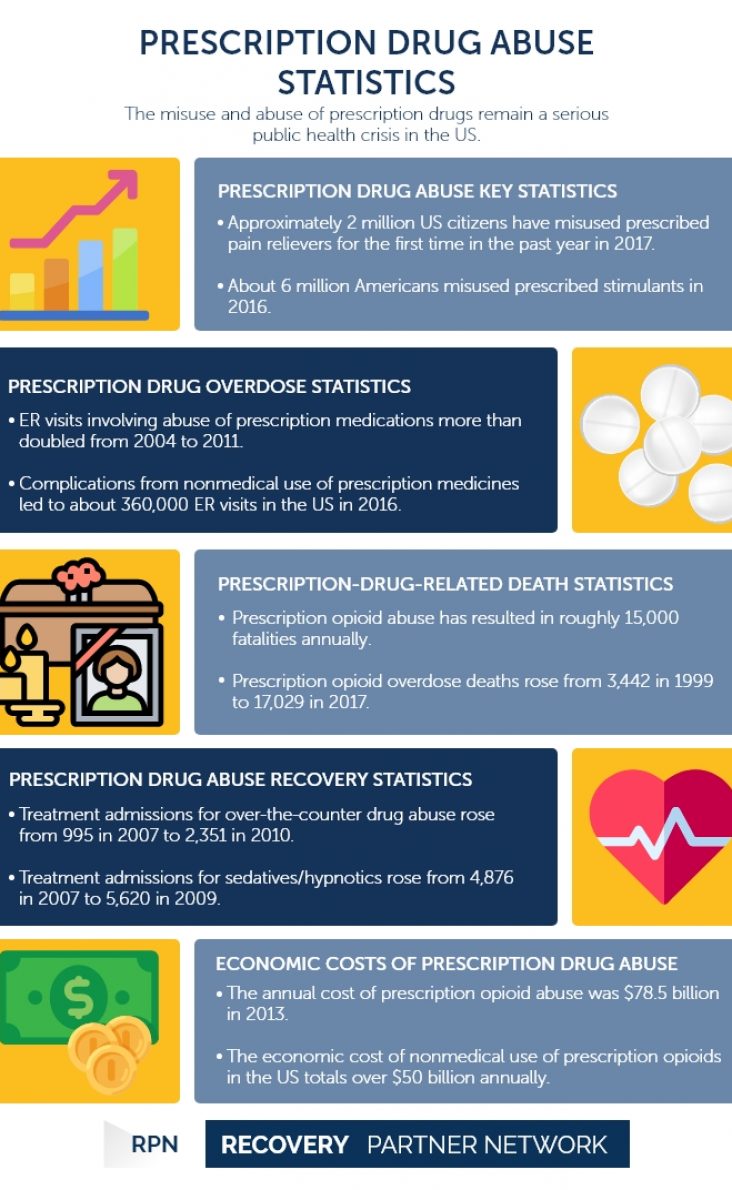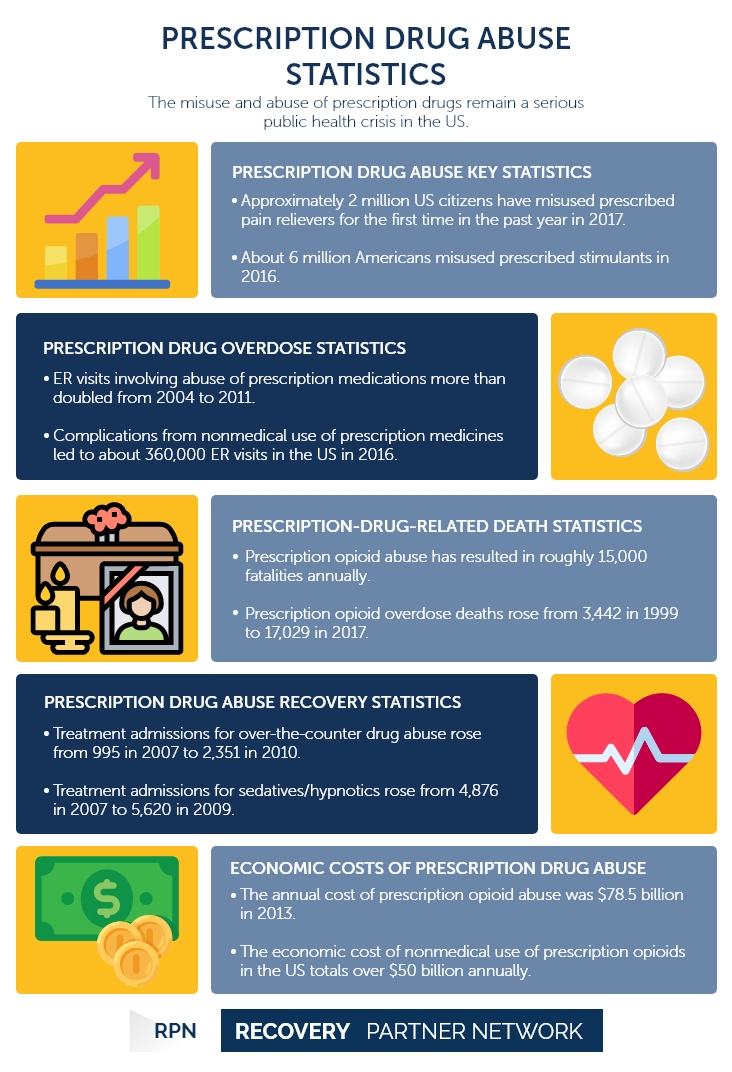The misuse and abuse of prescription drugs remain a serious public health crisis in the US.
Prescription Drug Abuse Statistics
Substance use disorder
- Alcohol abuse statistics
- Amphetamine abuse statistics
- Cannabis abuse statistics
- Cocaine abuse statistics
- Heroin abuse statistics
- Illicit drug abuse statistics
- Inhalant abuse statistics
- Methamphetamine abuse statistics
- Opioid abuse statistics
- Prescription Drug abuse statistics
- Tobacco abuse statistics
Prescription Drug abuse statistics | Table of Contents
Prescription Drug Abuse
Prescription drug abuse refers to the use of any medication prescribed by a doctor in a manner that was not intended or beyond the scope of the prescription. The spending for prescription drugs in the United States was at $234.1 billion in 2008, which was more than double what was spent in 1999. This recurring epidemic of prescription drug abuse has reached extreme proportions in the US.
In 2010, there were enough prescription painkillers prescribed to medicate every American adult around-the-clock for a month. Prescription drug abuse is the fastest-growing drug problem in the US.
Prescription Drug Abuse Key Statistics
- More than three out of four people who misuse prescription painkillers use drugs that were prescribed to someone else.
- According to the National Institute on Drug Abuse (NIDA), approximately 18 million individuals (12 years of age and older) have misused prescription medications at least once in the past year.
- In 2016, about 6 million Americans misused prescribed stimulants, which is about 2 percent of the US population aged 12 years and older.
- According to National Survey on Drug Use and Health (NSDUH), an estimated 2 million US citizens have misused prescribed pain relievers for the first time in the past year in 2017.
- Over one million Americans misused prescribed stimulants, 1.5 million abused tranquilizers, and 271,000 misused sedatives for the first time in 2017.
- Misuse of prescription medications is higher in individuals aged 18 to 25 years, with 14.4 percent showing nonmedical use in the last year.
- NIDA further estimates that for individuals between the ages of 12 and 17 years, 4.9 percent reported past-year nonmedical usage of prescription drugs.
- Seventy-six percent of nonmedical users recorded using medications that had been recommended to someone else, and just 20 percent reported that they had received the medication from their own practitioner.
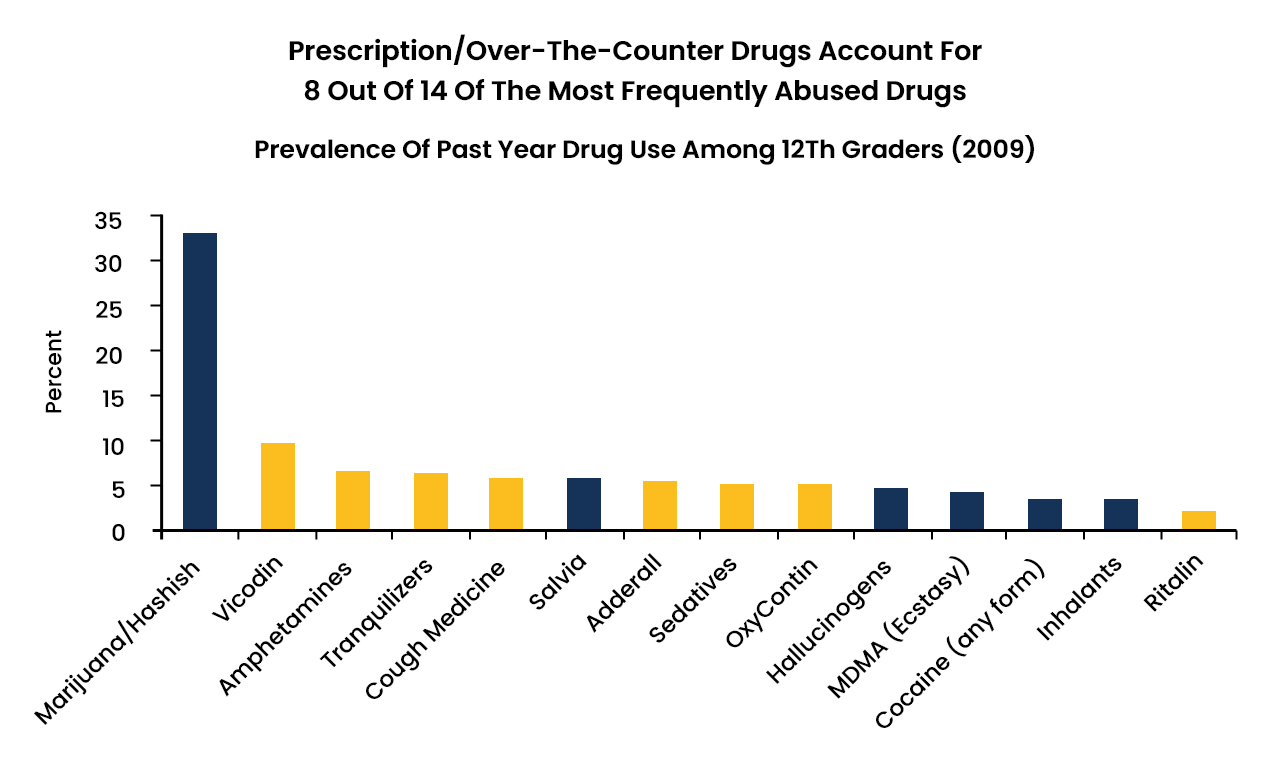
Prescription Drug Overdose Statistics
The most commonly abused prescription medications in the US include opioid painkillers, such as Vicodin and codeine, antidepressants or sleep medications, such as Valium and Xanax, and stimulants such as Adderall and Ritalin. Thousands of Americans visit the ER annually for prescription drug-related overdoses, accidents, and health complications.
- According to the National Hospital Care Survey, ER visits involving misuse or abuse of prescription medications more than doubled from 2004 to 2011.
- ER visits involving adverse reactions remained relatively stable during the past few years after increasing about 80 percent from 2005 to 2009.
- According to a study conducted by the Centers for Disease Control and Prevention (CDC), complications from nonmedical use of prescription medicines led to about 360,000 ER visits in the US in 2016.
- According to the Substance Abuse and Mental Health Services Administration (SAMHSA), there were nearly 1.2 million hospital emergency room visits involving prescription medications in 2009.
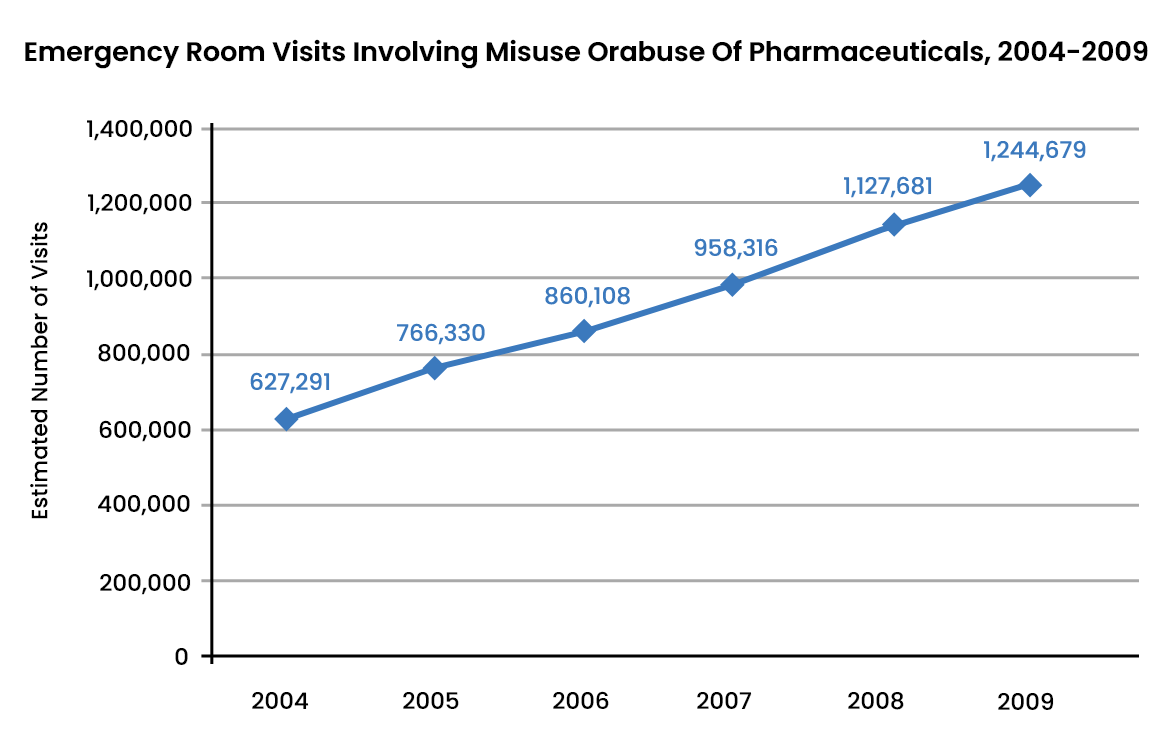
Prescription Drug-Related Death Statistics
Prescription drug abuse causes the highest rate of drug overdose fatalities in the US. Overdose mortality rates have significantly risen with the opioid crisis in the US since 1999. Prescription opioid abuse has resulted in more people dying each year than heroin and cocaine combined.
- Of the 64,000 drug overdose deaths recorded in 2016, sedative pharmaceutical medications, including barbiturates and benzodiazepines, are among the leading cause of overdose fatalities. In particular, benzodiazepines themselves were responsible for nearly one in seven of these fatalities, often when paired with prescription opioid medications such as OxyContin or Vicodin.
- Prescription opioid abuse has resulted in roughly 15,000 fatalities annually.
- Drug overdose fatalities, including prescribed opioid-related deaths, grew from 3,442 in 1999 to 14,139 in 2014.
- Overdoses involving opioids killed about 47,000 people in 2018, and 32 percent of these fatalities involved prescribed opioids.
- Prescription opioid overdose deaths rose from 3,442 in 1999 to 17,029 in 2017. However, from 2017 to 2019, the number of deaths dropped to 14,139.
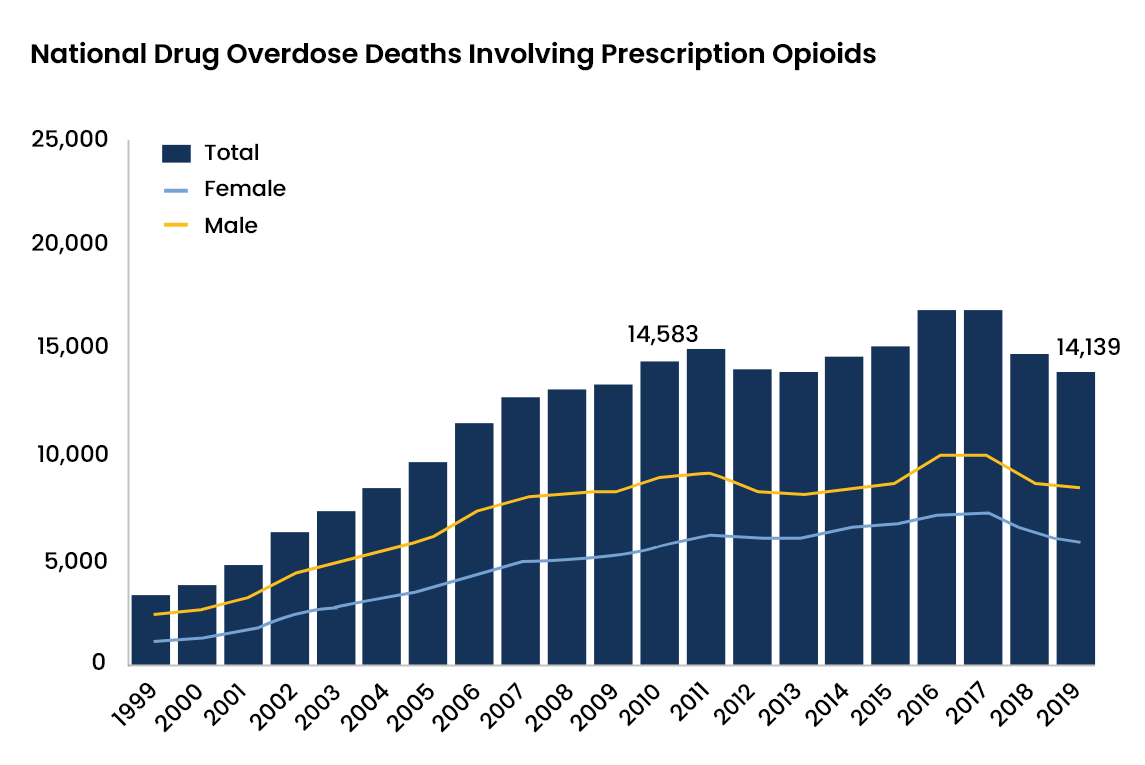
Prescription Drug Abuse Recovery Statistics
Although various treatment methods have been introduced in the battle against drug abuse and addiction, treatment admission rates related to various prescription drug abuse have fluctuated significantly during the past few years.
- Treatment admissions for over-the-counter drug abuse rose from 995 in 2007 to 2,351 in 2010 (the highest reported). However, the figures have declined dramatically over the years and have fallen to 813 in 2017.
- Treatment admissions for sedatives/hypnotics rose from 4,876 in 2007 to 5,620 in 2009. Nevertheless, treatment admissions declined each year since 2009 and fell to 3,460 in 2017.
- The treatment rate for opiates, including prescription opioids (other than heroin), was 59 percent lower in 2005 at 29 per 100,000 people aged 12 years or older than that of 45 per 100,000 population in 2015.
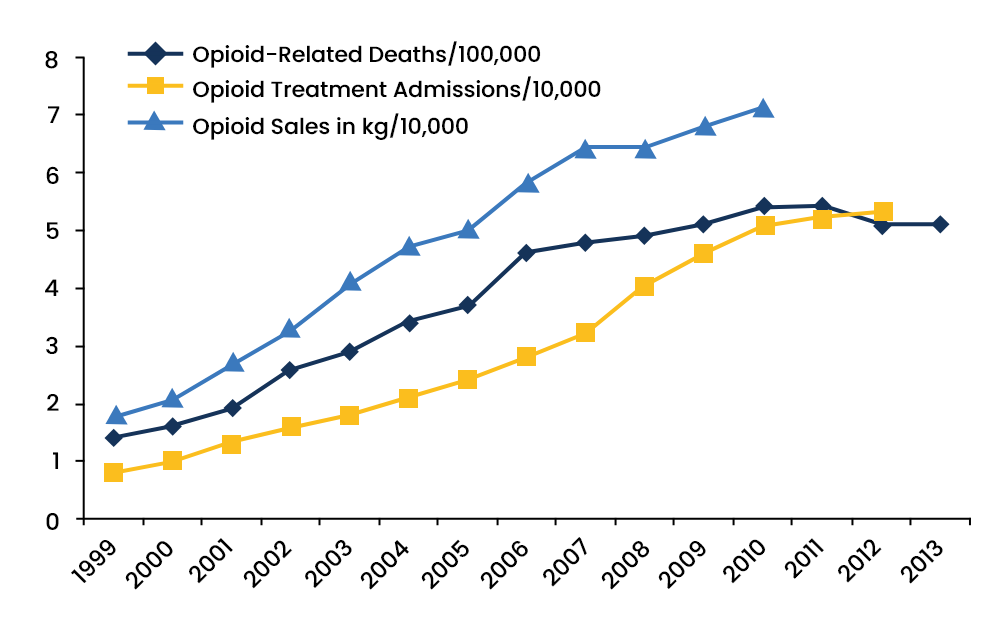
Economic Costs of Prescription Drug Abuse
Abuse of opioid painkillers, stimulants, hypnotic medications, and other prescription drugs costs billions of dollars a year in the US. The cost of healthcare and the loss of productivity is the main cost related to the economic burden of prescription drug abuse.
- The annual cost of prescription opioid abuse is estimated at $78.5 billion in 2013.
- The economic cost of nonmedical use of prescription opioids in the US totals more than $50 billion annually. The lost productivity and crime account for 94 percent of these costs.
- The economic burden from heroin and prescription painkiller abuse is on track to cost $500 billion from 2018 to 2020 alone.
- The overall cost of prescription opioid abuse was estimated at $78.5 billion in 2017. Of that total cost, $253 billion can be attributed to the cost of mortality, $205 billion to healthcare costs, and $96 billion to the loss of productivity. Community justice expenditures contributed to an overall $39 billion, with child/family education and assistance totaling $34 and $5 billion, respectively.
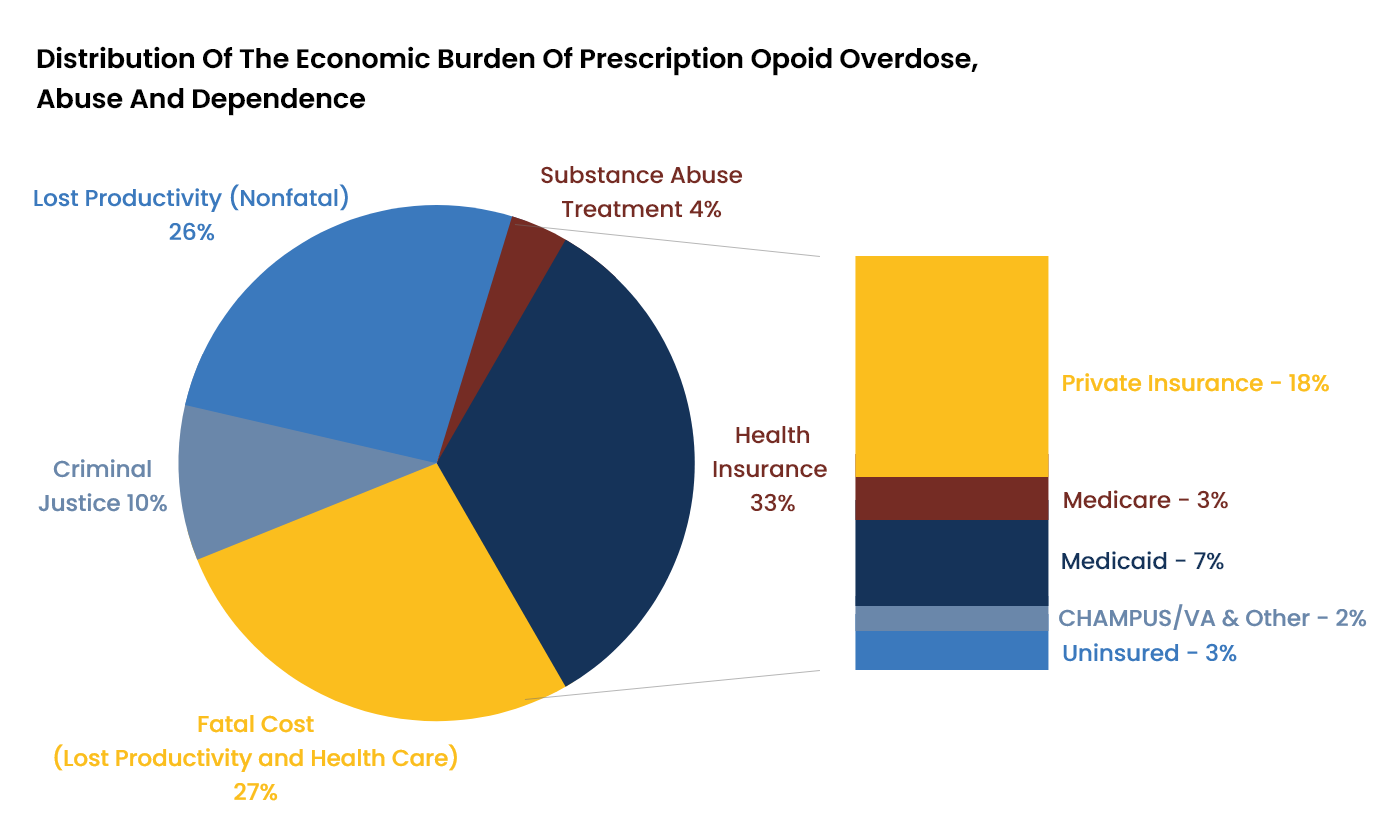
Recovery Partner Network
We aim to educate and empower. If you feel our library of resources does not cover your specific need, reach out to us, and we would be happy to help.
STATISTICS
© Copyright 2025

